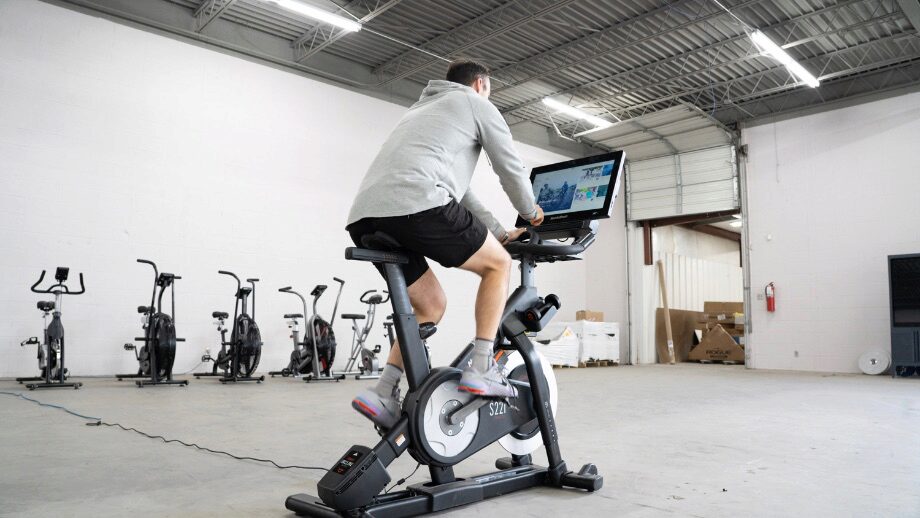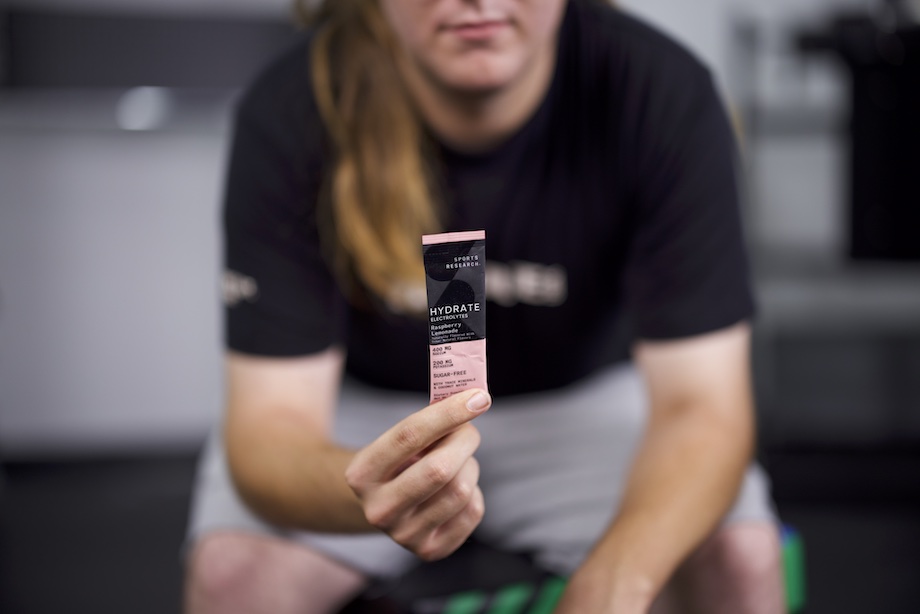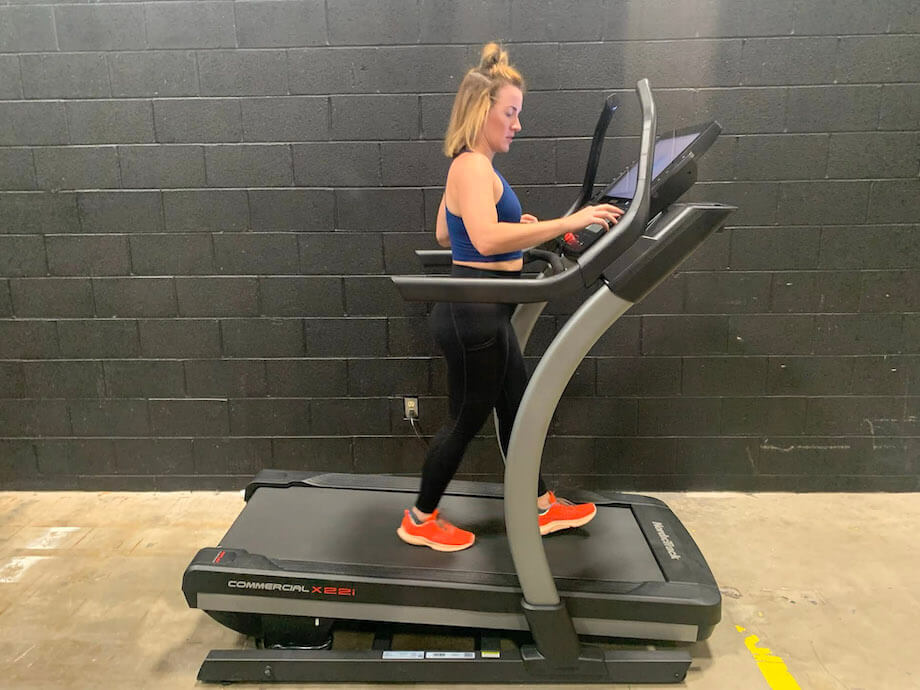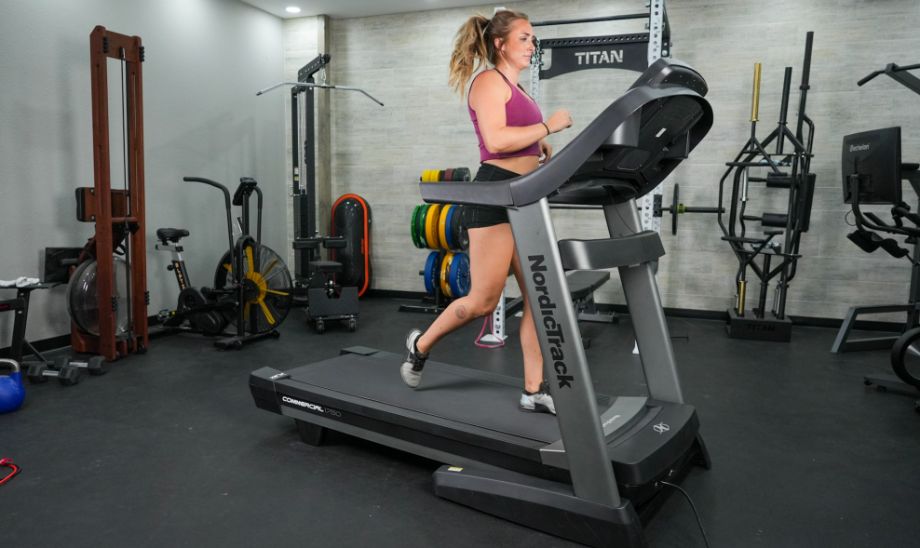Adding size to your arms is totally possible with a few simple arm exercises. But you’ll also need to have a consistent resistance training routine—no exercise done sporadically will provide significant results. Plus, understanding how much protein you need to gain muscle and initiate the natural process of protein synthesis will also help you achieve the arm mass you’re looking for.
You won’t find anything fancy or groundbreaking in this guide on how to gain arm mass. But speaking as a certified personal trainer, I will tell you that it’s going to take more than the best bicep workout to increase the muscle mass in your arms.
Biceps curls are great, but I’d prefer it if you take a holistic approach to your arm workouts and include all the muscle groups that make up your arms. In this guide, I’m going to provide a handful of triceps exercises, shoulder exercises, and a few compound movements, too.
RELATED: Arm Workouts with Weights
Get Bigger Arms: Exercises to Build Size
Full-body strength training will build muscle through both your upper body and lower body with an adequate and balanced program. But if you’re not seeing the muscle growth you want, it’s totally okay to add additional arm training to your routine.
RELATED: Full-Body Dumbbell Workout
It may come as a surprise that getting bigger arms doesn’t necessarily mean lifting heavier weights. To increase your muscle size (aka muscle hypertrophy) you’ll research finds it’s highly effective to train with moderate weights for higher rep ranges1. This technique is popular in the bodybuilding community, where muscle size is the ultimate goal.
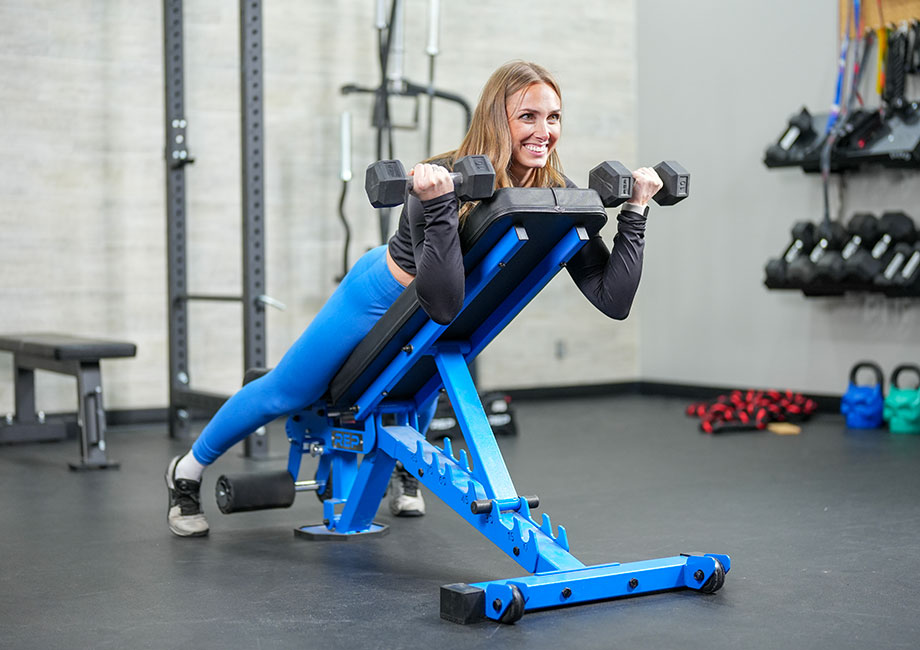
On a macro-level, I’m not the biggest fan of hypertrophy-style training but I do utilize high-volume for two things: shoulders and glutes. And I can assure you the technique works.
RELATED: Hypertrophy Workouts 101
Anatomy of the Arm Muscles
Here’s a brief breakdown of the anatomy of your arm muscles, focusing primarily on the two main muscle groups you’ll be training. Don’t worry, I wont get too science-y.
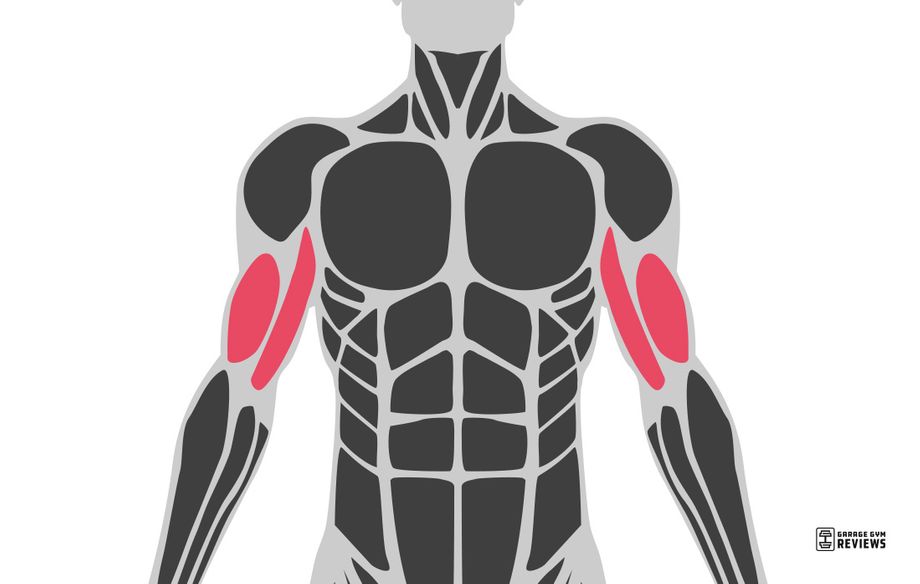
Biceps brachii
The biceps brachii2 is an anterior (front) muscle made up of two tendons—the long head and the short head—that attach your scapula to your upper arm bone. Your biceps primary functions are elbow flexion and rotation of the forearm. Other muscles to note are the brachialis, brachioradialis, and the coracobrachialis muscles.
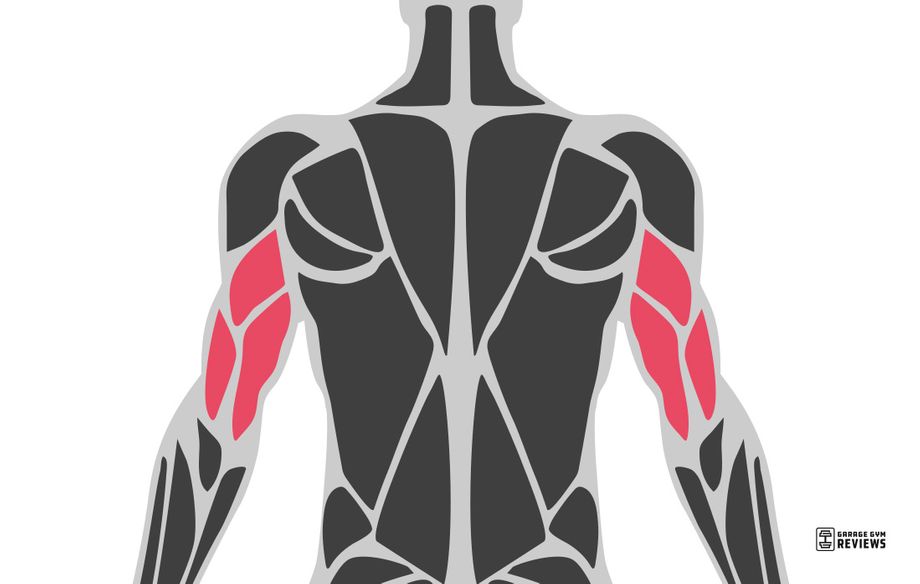
Triceps brachii
The triceps brachii3 is located on the posterior (or back) side of your upper arm and consists of three heads—the long head (on the inside), medial head (middle), and lateral head (on the outside). These muscles assist you in elbow extension and stabilization of the joint.
Got it? Great! On to the exercises.
Below, I’ve included movements for biceps and triceps—while also recruiting your shoulders, and upper back for well-rounded arm training. Most are isolation exercises to target specific muscle groups, but you’ll notice a few compound exercises in there, too (like the underhand bent-over row).
8 Best Exercises to Gain Arm Mass
- Incline bench dumbbell curls
- Hammer curls
- Lying skull crusher
- Overhead triceps extension
- Chin-up
- Underhand bent-over row
- Dumbbell overhead press
- Reverse dumbbell fly
Incline Bench Dumbbell Curls
Why do it: Because incline dumbbell curls are difficult AF. Reclining on a bench at a 45- to 60-degree angle increases your range of motion by positioning your torso in front of your arms. This creates quite a bit of strain and stretching on the biceps muscles. At the bottom range of motion, the biceps are lengthened (you can think of this as being stretched out fully) and can result in greater muscle gain4 because of the fully lengthened position.
How to do it:
- Using an adjustable bench, place the back pad anywhere between a 45- and 60-degree angle (depending on your mobility requirements).
- Sit on the bench holding a pair of dumbbells.
- While holding the dumbbells, bring your arms to the dead hang position.
- Without help from your upper arms or back, begin to bend at the elbows and curl both dumbbells toward your shoulders.
- Curl until your biceps are fully contracted.
- Pause at the top and control the lowering motion until you return to the dead hang starting position.
- Repeat for reps (aim for 10 or more).
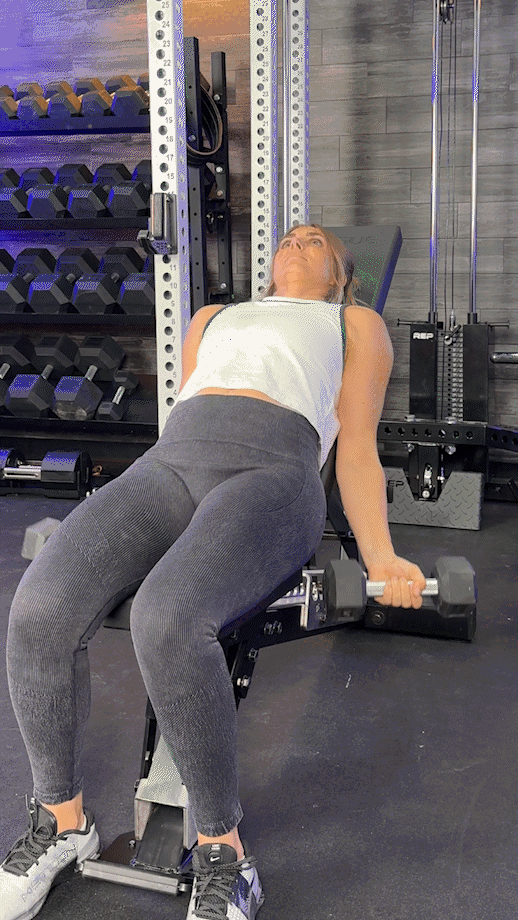
RELATED: Best Dumbbell Curl Variations
Hammer Curls
Why do it: A traditional biceps curl activates both biceps brachii (short and long head of the biceps) but the hammer curl adds a bit of flair by recruiting the brachioradialis and brachialis muscles. Both of these muscles are mainly located in the forearm, but attach to the humorous. This means that adding the hammer curl variation to your routine can help achieve balanced arm muscle growth through the upper and lower part of your arms.
How to do it:
- Start in a standing position, with your feet, hips, and shoulders in alignment.
- Holding a pair of dumbbells, bring your hands into a neutral position with your palms facing your legs.
- Keep your hands in the neutral position and begin bending at the elbow without recruiting your upper back and shoulders.
- Curl the dumbbells toward your shoulders until your biceps are fully contracted.
- Keep your palms in the neutral position as you complete the range of motion.
- Pause at the top and lower the dumbbells back to the starting position—keeping neutral palms the entire time.
- Reset and repeat for repetitions (aim for 12 reps or more).
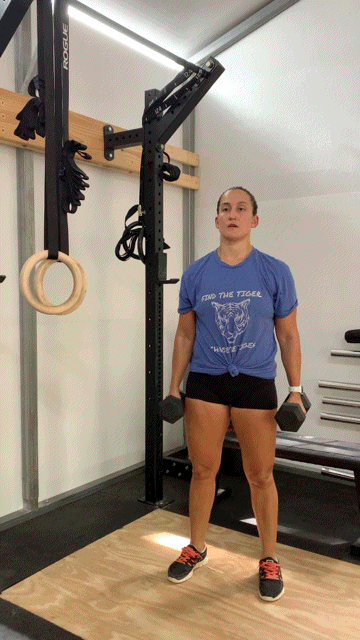
RELATED: How to Do Hammer Curls
Lying Skull Crushers
Why do it: Bigger arms means training holistically. You’ll need to incorporate triceps exercises to target your antagonist muscles (aka opposing muscles). Lying skull crushers are an ideal way to bring the triceps through full range of motion, which can lead to tremendous muscle gains. The skull crusher also simulates the locked-out position of a push-up, bench press, and overhead press, which can be helpful to your overall weight lifting routine.
How to do it:
- Holding a barbell or EZ-curl bar, get into the prone position either on the floor or a weight bench with your arms fully extended, hands shoulder-width apart, shoulder blades pinched, and palms facing away from you.
- Begin the skull crusher by bending at the elbows and slowly lowering to your forehead (or just beyond depending on your range of motion capabilities). You should feel a stretch through your triceps at the end range of motion.
- Pause before pushing the barbell back up and returning to the starting position with your elbows locked out.
- Reset and repeat for repetitions (aim 15 or more).
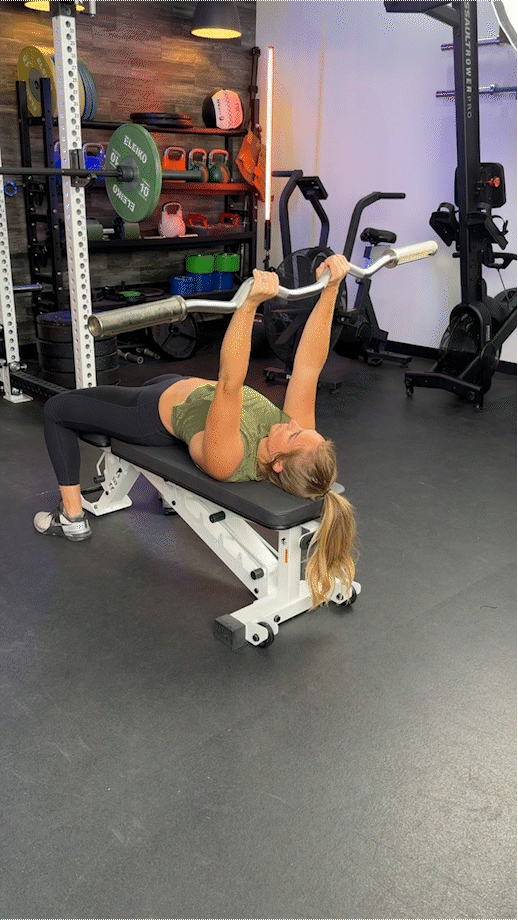
RELATED: How to Perfect The Skull Crusher Workout
Bodyweight Triceps Dips
Why do it: Triceps dips are an accessible bodyweight exercise for most home gym owners (and anyone with a sturdy chair, coffee table, or box, for that matter). As you get stronger arms, you can progress by increasing your range of motion, increasing the number of reps, or adding more sets. When going for muscle size, selecting exercises that you can complete for 10 to 20 repetitions is key to seeing arm growth.
How to do it:
- Sit on a stable surface like a bench, plyo box, or chair then place both hands on the edge with hands on either side of your hips and fingers pointing forward.
- With your elbow locked out and shoulders down and back, walk your feet forward until most of your bodyweight is in your arms. Legs can be bent at 90 degrees or straight.
- Brace your core muscles and begin bending your elbows, lowering your body towards the ground.
- Pause when you can’t lower any further, then press through your hands to straighten your arms and turn to the starting position.
- Repeat for reps, aiming high (think 10 to 20).
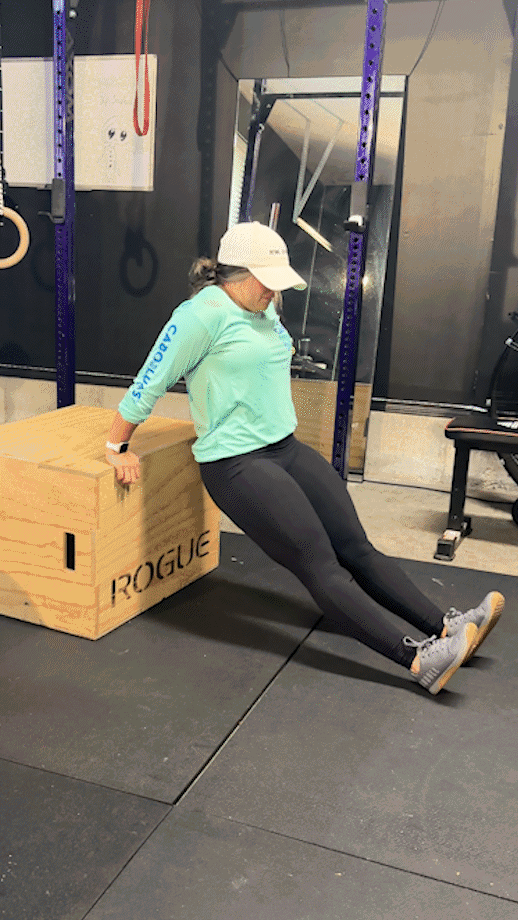
RELATED: How to Do The Triceps Dip Exercise
Chin-Up
Why do it: Not only do chin-ups target your lats and upper back muscles, this exercise also recruits forearm and biceps muscles. Plus, the more reps you complete the more time under tension1 your arm muscles will endure—which is another hack to bigger biceps. Note: You’ll need a traditional pull-up bar for this and you’ll utilize an underhand grip.
RELATED: Best Pull-Up Bar
How to do it:
- Start in a dead hang position on a pull-up bar with palms facing you.
- Retract shoulder blades down and back, creating space between your shoulders and ears.
- Begin to pull yourself up using the strength of your arms and upper back.
- Keep your chest up, back slightly arched, and shoulder blades pinched.
- Pause at the top if you can and slowly lower yourself down until you’re back to the dead hang position.
- Repeat for as many as you can.
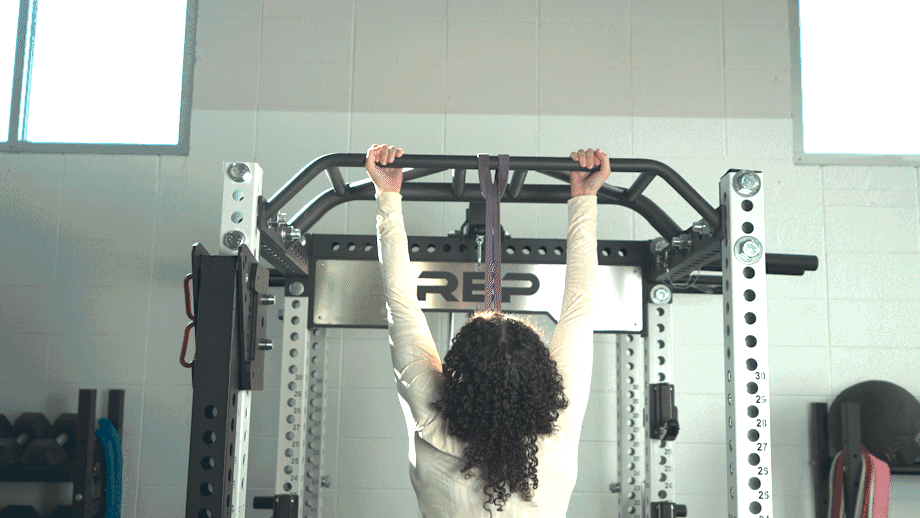
RELATED: What Muscles to Chin-Ups Work?
Underhand Bent-Over Row
Why do it: Much like the chin-up, the bent-over row is predominantly a back exercise. However, with an underhand grip you’ll get increased activation in the biceps, too. You can use a barbell, EZ-curl bar, or dumbbells for this exercise.
How to do it:
- Start in a standing position with your feet hip-width apart, gripping a barbell with an underhand grip, arms relaxed, and shoulders down away from your ears.
- With a slight bend in your knees, hinge your hips back (like you’re performing a partial Romanian Deadlift) until your chest is pretty much parallel to the floor. You’ll probably feel your hamstrings stretching here, but that’s normal.
- The starting position for the row is arms fully extended. To initiate the row, keep you back flat and your shoulder blades pinched as you bend your elbows and pull the barbell toward your belly. The elbows should stay tight with your ribcage.
- Hold at the top with your biceps and lats contracted.
- Slowly lower until your arms are fully extended and directly below your shoulders.
- Repeat for reps (aim for 10 to 20).
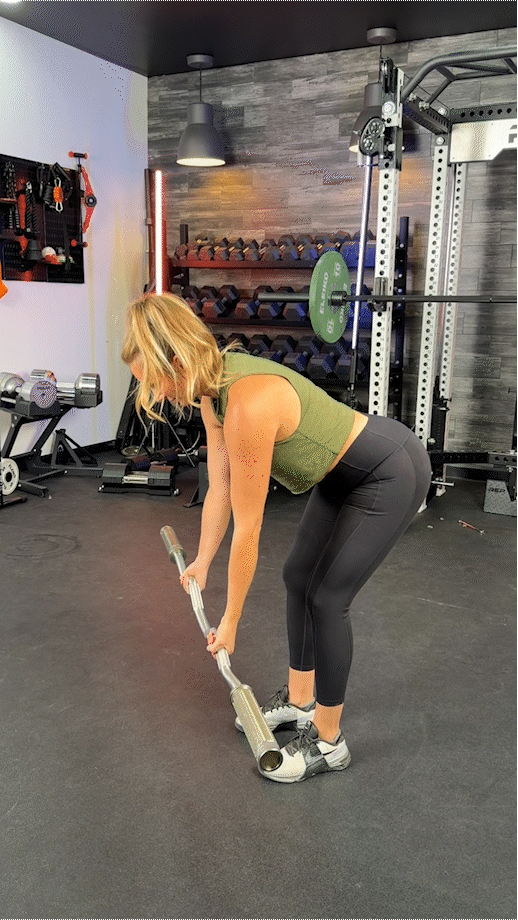
RELATED: 13 Best Exercises For A Lat Workout
Dumbbell Lateral Raise
Why it’s great: The lateral raise is an ideal way to strengthen and shape your shoulders. This exercise targets your lateral deltoids, which is one of the best exercises if you’re looking to build boulder shoulders.
How to do it:
- Start in a standing position, with your feet, hips, and shoulders in alignment.
- Hold a pair of dumbbells on each side of your body, palms facing inward toward your legs.
- With your shoulder blades down, raise your dumbbells up until they reach about shoulder level. You’ll want to choose a weight that allows you to lift without shrugging your shoulders or recruiting other muscles.
- Slowly bring the weights back down to your sides.
- Repeat for repetitions (aim for 15 to 20 using lighter weights).
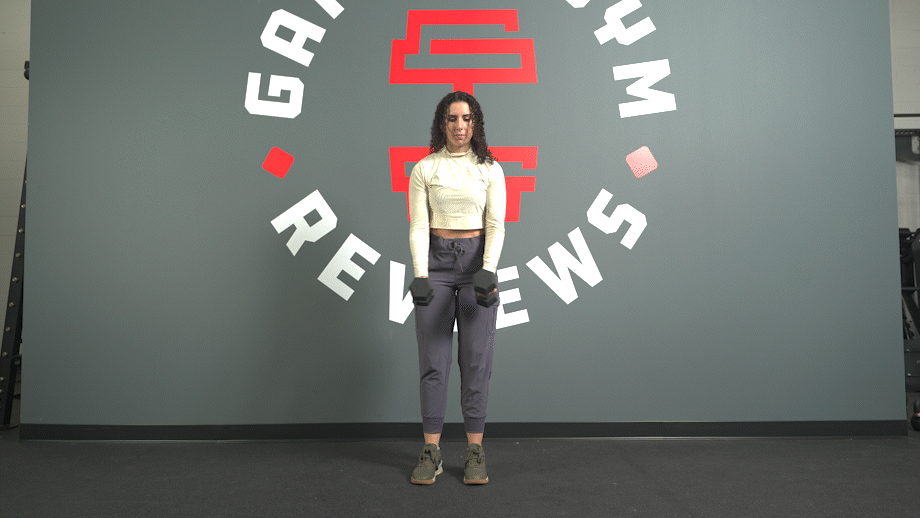
RELATED: Best Deltoid Exercises
Reverse Dumbbell Fly
Why do it: If you’re going after bigger arms, the rear delt is worth your time, too. Strengthening and building muscle around the rear delt offers a defined appearance to your shoulder from the back. While you may not be able to see it, your gym friends certainly will!
How to do it:
- Start in a standing position, feet shoulder-width apart and your feet, hips, and shoulders in alignment.
- Hold a light pair of dumbbells with your palms facing inward toward your legs.
- With a slight bend in your knees, hinge at the hips until your chest is parallel with the floor.
- Allow your arms to extend straight keeping them directly below your shoulders. Before you start the reverse fly, be sure shoulders are down away from ears.
- Raise your dumbbells using the strength of your shoulders and upper back, pinching your shoulder blades together at the top range of motion.
- Hold for a moment before slowly lower the weights back to the starting position.
- Repeat for reps (aim for 10 to 15).
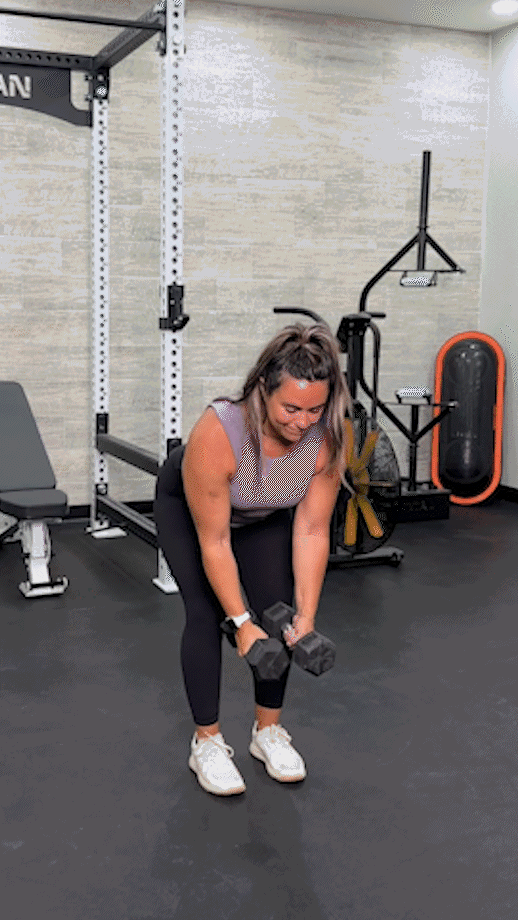
RELATED: The Best Shoulder Workouts With Dumbbells
How Often Should I Train Arms?
The most common answer for how often you should train your arms tends to be about two to three times per week, but this amount can vary. Kate Meier, NASM-CPT, USAW-L1, CF-L1, and GGR head of content, believes that how often you train your arms depends on your goals, saying, “You can do exercises with your arms every day of the week if you want to, but if you’re doing high weight or high volume, you should reduce the number of training sessions.”
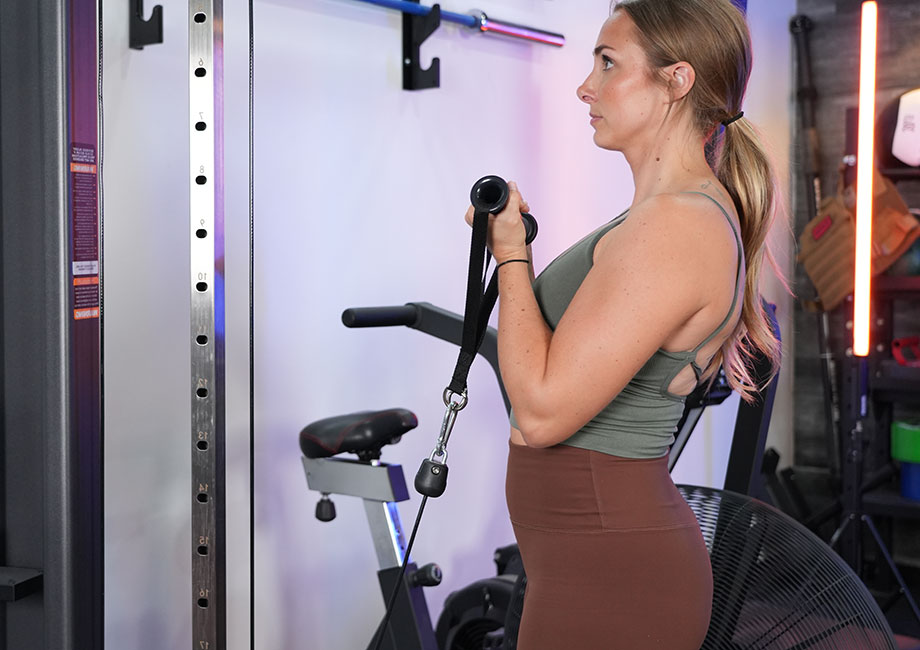
“If you’re trying to build muscle mass or strength, I recommend doing isolation exercises, which are those targeting a specific muscle, two to three times a week. During these workouts, you should vary your weight and rep schemes to balance heavier, lower-rep days and lighter, higher-rep days. You can also add compound lifts, like presses, two to three times per week. If you’re trying to build muscular endurance, you can do higher-volume, lower-weight reps of isolated exercises three to four times a week. This is also a good approach for beginners new to weight training,” adds Kate.
How to Gain Arm Mass: FAQs
Below are some frequently asked questions on gaining mass in your arms:
What increases arm mass?
Big arms with plenty of muscle mass comes from consistent training and appropriate protein intake. You’ll also have to take a holistic approach to upper body training with triceps and shoulder training in addition to biceps exercises.
RELATED: Protein Shakes for Bulking
What foods help arm mass?
Protein aids recovery and helps with muscle protein synthesis, aka muscle gains. If you’re not sure about how much protein you’ll need, have no fear. Garage Gym Reviews teamed up with registered dietitian Destini Moody to answer the question: How much protein do you need to gain muscle?
Will lifting heavy weights make my arms bigger?
Heavy weights can certainly make you stronger, but there’s evidence to suggest that muscle size can be stimulated quite effectively using lighter weights and higher repetitions2, creating a longer period of time the muscle is under tension.
References
- Burd NA, Andrews RJ, West DW, et al. Muscle time under tension during resistance exercise stimulates differential muscle protein sub-fractional synthetic responses in men. J Physiol. 2012;590(2):351-362. doi:10.1113/jphysiol.2011.221200
- Tiwana MS, Charlick M, Varacallo M. Anatomy, Shoulder and Upper Limb, Biceps Muscle. 2023 Aug 28. In: StatPearls [Internet]. Treasure Island (FL): StatPearls Publishing; 2023 Jan–. PMID: 30137823.
- Tiwana MS, Sinkler MA, Bordoni B. Anatomy, Shoulder and Upper Limb, Triceps Muscle. [Updated 2023 Aug 28]. In: StatPearls [Internet]. Treasure Island (FL): StatPearls Publishing; 2023 Jan-. Available from: https://www.ncbi.nlm.nih.gov/books/NBK536996/
- Pedrosa GF, Simões MG, Figueiredo MOC, Lacerda LT, Schoenfeld BJ, Lima FV, Chagas MH, Diniz RCR. Training in the Initial Range of Motion Promotes Greater Muscle Adaptations Than at Final in the Arm Curl. Sports. 2023; 11(2):39. https://doi.org/10.3390/sports11020039



